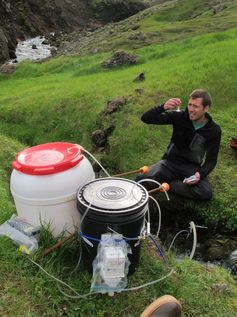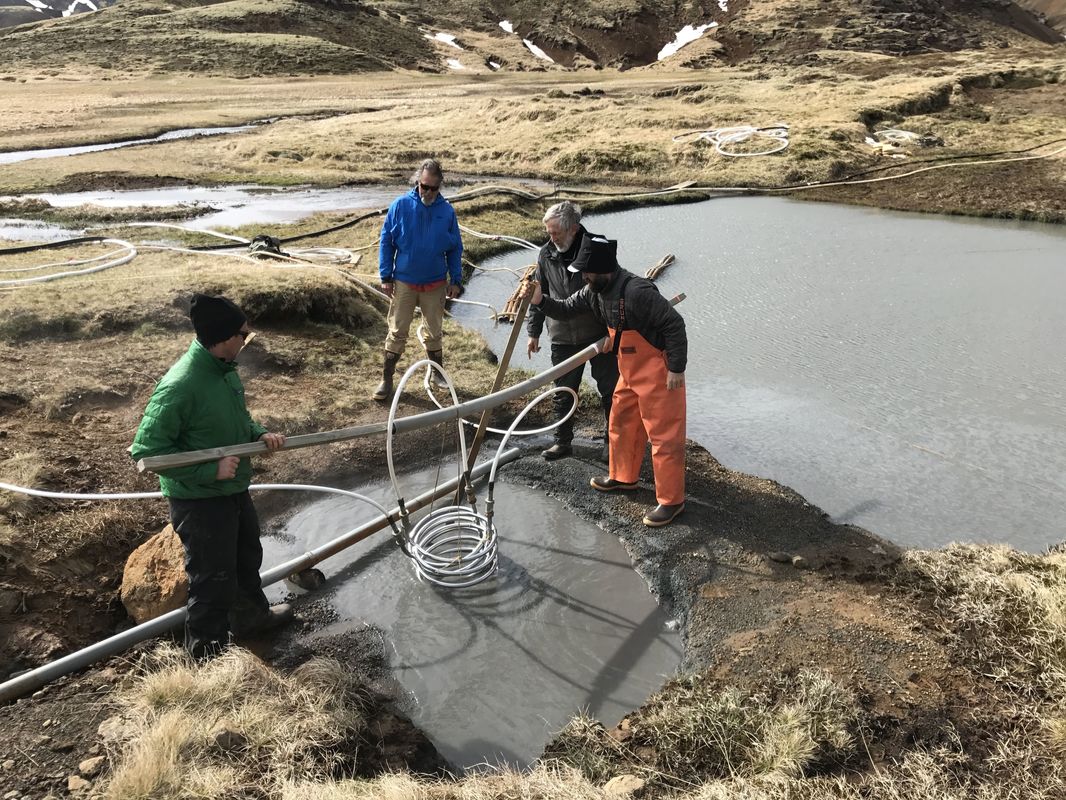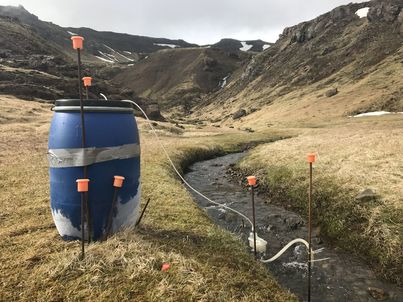0 Comments
Our field season in Iceland kicked off last month, so it's high time I posted on our progress. We started off in early May by setting up the channel experiment again, made much easier this year by a notably small snowpack. But first we had to find all the many pieces of the experimental set-up in the new storage facility, where all our gear was moved over the winter. It was all there, so we set to checking it over and packing it up in the truck. For once, setting up the channel experiment went smoothly. Perhaps we're finally getting it down on the fourth iteration. Or maybe it's because Wyatt stayed out of the way and mostly mugged for the camera. In any case, our final channel experiment is up and running. It will explore how threshold responses of biofilm communities to relative nitrogen and phosphorus availability change with temperature. Next up was to get the nitrogen drippers going in the two cold and two warm streams. Six hundred kilos of ammonium nitrate fertilizer will do the job, delivered by the same float-valve drippers we used last year to add phosphorus. It's now mid-June and still early days for our nitrogen additions, but spot the difference. Here are two shots taken yesterday of one of our warm streams. The left photo is just upstream of the nitrogen dripper, while the other shot is just downstream. Note the particularly lurid green clumps of Cladophora that start directly below the dripper. The isotope additions to the four streams will start in the next few days, so watch this space.
 It's been a bit quiet on the publication front of late (we had a very sobering run of rejections last year), but Dan Nelson's first manuscript from his dissertation is now out in Global Change Biology. In it, we describe how the experimental warming of a small upland stream in Iceland by 3.8 degrees C changed the structure of its invertebrate community. Somewhat surprisingly, average body size increased. The landscape in which the stream is embedded has streams of varying temperature, which contain taxa with a wide range in thermal preference. It just happens that many of the invertebrates with higher thermal preference are relatively large-bodied (snails and black flies, for example) and these groups responded strongly to our whole-stream warming manipulation. These results show that shifts towards lower average body size with warming are not universal, and that the combination of diversity in thermal preference and dispersal ability will dictate how communities reassemble as ecosystems warm in the future. Well done to Dan for all the hard work he put in to reveal these patterns! |
|
|
Accessibility | Equal Opportunity | UA Disclaimer | Site Disclaimer | Privacy | Copyright © 2020
The University of Alabama | Tuscaloosa, AL 35487 | (205) 348-6010 Website provided by the Center for Instructional Technology, Office of Information Technology |












 RSS Feed
RSS Feed